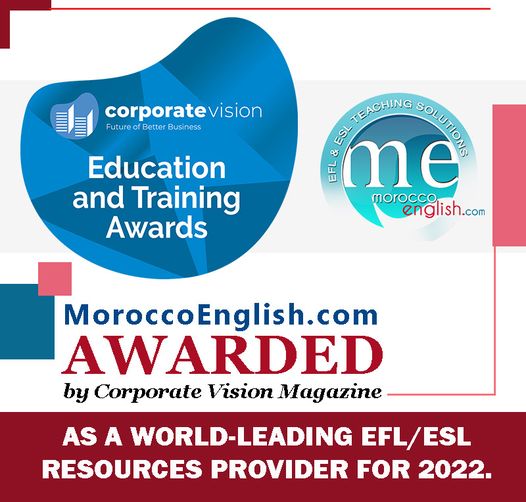You can go to Part1 of this article, if you haven’t yet read it

-
Title: Concentration
Type: Concentration Game
Target: Any vocab or conversation pattern
Materials: None
Procedure: Assign each student an answer to the conversation question or a vocabulary word. This game works really well with remembering names so your question could be ‘Who is ____?” The first person starts by saying “I’m Chandra.” Then asks ‘Who is Eun Ji?” Then Eun JI answers ‘I’m Eun Ji. Who is Min Young?” However, there is a rhythm that the students must clap and speak to. First you slap your legs, the clap your hands, then snap your fingers with one hand and then the other. The words of the sentence must go to the beats of the rhythm. If a student doesn’t answer to the rhythm they are out.
Comments:
-
Title: Copy cat
Type: Game
Target: Any vocabulary
Materials: None
Procedure: Students say a vocabulary word and do an action to go with it. The student beside them must copy exactly the action and word that the student said. They then say a new word and make up a new action which the next person copies. Continue until all have had a turn.
Comments: You can vary this game to focus on intonation by having the students mimic each other’s intonation and tone of voice while saying the word or even a sentence.
-
-
Title: Countdown
-
Type: Concentration game
Target: Any conversation, fluency
Materials: Timer
Procedure: The first student says the question part of the conversation, for example, “Will you help me?” The next student answers “Of course” and then asks the next student “Will you help me?” This continues all around the class until the last person answers the question. The timer starts t the beginning and finishes at the last student. The class can try a few consecutive times or over a period of days to try and beat their last time.
Comments:
-
Title: Cover-up
Type: Game
Target: Any vocabulary
Materials: flashcards, cover cards
Procedure: Put pictures cards out on a table. Say each one twice and then give the students 20 seconds to memorize their location. Give each student a cover card (blank piece of paper with a colour on it or a number on it) to place over top of a picure card. Mix up the location of the cards to make it more difficult.
Each student chooses a cover card and tries to say the picture card that is under it. If they get it right then they take the card and it is replaced with a new one and they keep going until they can’t remember. Then it is the next person’s turn. The person with the most pictures cards wins.
Comments:
-
Title: Cowboy
Type: Active Game
Target: Any vocabulary
Materials: Word/picture cards
Procedure: 6 students with word/picture cards stand in a line with a chair behind them. I call out a word and the student with that card sits down. The two students on either side of the student who sat down turn and face each other.
They then have a ‘gun duel’ like in the Wild West where the quickest shooter wins. The first of the 2 students to call out the opposite person’s card is the winner (they ‘shot’ the other person with their word). The loser must act like they died and is out of the game. A new student takes their place. Switch spots and repeat.
Comments:
-
Title: Days Card Game
Type: Game
Target: Days of the Week
Materials: cards available form genkienglish.net
Procedure: The days of the week in English have a special meaning. They each go with a planet. Tuesday – Mars Wednesday – Mercury Thursday – Jupiter Friday –Venus = Saturday – Saturn. Sunday, of course, is named for the sun. Monday – named for the moon. Now I have these cards. Each one has one day of the week on it and a number. The number matches how far it is away from the sun. The farthest planet had the biggest number. Now in partners we will play the card game. The first person asks “What day is it?” The next person turns over a card and says “it’s _______.” The other person turns over their card too. Whichever card has the biggest number takes both cards into their pile.
Whoever collects all 7 cards (or you can play for the most cards) is the winner.
If there is a tie of numbers, then you do it over again and the winner of the second time gets all 4 cards!
Comments:
-
Title: Detective
Type: Game
Target: Possessives (Is the your __?)
Materials: Student’s personal objects
Procedure: Students take turns being “it” and go out of the classroom and wait for a while. Choose a student’s item and put it on the table. All the students in the classroom call out for “it” to come back in the classroom. “It” tries to find the owner of the item on the table. Students say HOT if ‘it’ is close to the person and COLD if they are far away. When ‘it” designates someone as the owner, students ask him/her “Is this your pencil?” The student designated answers, “Yes, it is/ No, it isn’t” Then the next it goes outside and waits to be the detective.
Comments: Perhaps could be altered to focus on another theme.
-
Title: Dice Addition
Type: Game
Target: Any conversation
Materials: None
Procedure: Divide the students into groups and brainstorm sentences on the theme, for example what did you do yesterday; listened to music, met my friends, studied, did my homework, watched TV, played computer games, sang karaoke, ate supper, visited my family, went to the park, watched a movie, played soccer. Now give each one of these sentences a number and write it on the board. Then everyone in the group says ‘What did you do yesterday?” and the first person rolls the dice once. Everyone remembers the number. Then the same person rolls the dice again. The group adds up the numbers from the dice and says the sentence that matches the number. Then it is the next person’s turn.
Play until everyone has had a turn
Comments:
-
Title: Disappear
Type: Game
Target: Any vocabulary
Materials: flashcards
Procedure: Put picture cards on a table and give students 10 seconds to look and memorize. Then they close their eyes and I take one away. They open their eyes have to figure out which one is gone.
Comments: This game can be quite easy so to make it harder use more cards, lessen the time they have to look or remove more than 2 cards at once.
-
Title: Duck Duck
Type: Active Game
Target: Any conversation
Materials: None
Procedure: Students sit in a circle and close their eyes. I pick 2 students by touching them on the back. When I say go those 2 students go inside the circle and say the conversation, i.e. “What did you do yesterday?” “I ______.” When they are done they exit the circle through the spot where the opposite person was sitting and race all the way around the circle. The first person to go all the way around the circle back to the opposite person’s spot is the winner. The winner gets to choose the next 2 people that play.
Comments:
-
Title: Fast/slow motion
Type: Game
Target: Any vocabulary
Materials: picture cards
Procedure: Have a pile of picture cards and show them to the class one by one in either fast motion or slow motion. Students try to guess what the word is.
Comments: can also be played in teams and the first team to guess the card gets a point.
-
Title: Find your team
Type: Game
Target: Any conversation
Materials: mini cards
Procedure: Each student gets a certain card on a theme. There should be at least 2 matching cards within the whole set. Mix up the matching cards so that the students begin far apart. Have students ask and answer to find their team members (those students who have the same card as them.) For example, “Do you like apples?” If the student has an apple card they answer “Yes I do and stay with their partner. If they don’t they move on and keep searching for their partners.
Comments:
-
Title: Frozen Tag
Type: Active Game
Target: Any vocabulary or conversation
Materials: None
Procedure: One student is IT. IT tries to tag all of the other students. When the other students are tagged they become frozen. They are frozen until they say a vocabulary word or the target conversation to the teacher after which they are free again.
Comments: I usually play walking tag or slow motion tag, especially inside as it results in less confusion and injuries! Slow motion tag is especially fun because everyone has to move and talk in slow motion which can be very funny! You can also play so that one set of vocabulary is the ‘immunity’ which means that if they say a word from this set of vocab, they can crouch on the ground while IT is trying to tag them and they are immune to being frozen.
-
Title: Food Chain Evolution
Type: Active Game
Target: Animals
Materials: None
Procedure: Brainstorm with the students to develop a food chain of 5-7 animals from smallest to biggest. Review the sounds of these animals. All students begin as the lowest animal and must walk around the class while making the sound of that animal. When students meet someone who is making the same sound as they are making, the 2 students do rock-paper-scissors. The winner becomes the next level of animal in the food chain and the loser goes down a level in the food chain. The first student to get to the highest level wins
Comments: Perhaps could be altered to focus on other vocabulary as well.
-
Title: Funky Mummy
Type: Active Game
Target: Health, Body parts, Halloween
Materials: toilet paper rolls, body picture cards
Procedure: Each group has one doctor. The rest are the patients. The patients all do Rock-Scissor-Paper and the first loser picks a card from the pile. They look at the card and then say “Doctor, doctor my ______ hurts” or “Doctor, doctor, I have a _______” depending on the card they choose. Then the doctor should say “Oh That’s to bad” and wrap that part of the patient’s body in toilet paper. This continues until one student in the class is a complete mummy (wrapped everywhere)
Comments: If they say “my eye hurts” or “my arm/leg/foot etc hurts,” teach them to use left and right. You can make the conversation longer, like “My arm hurts!” “Which one?” “This one [holding left arm up].” or “My left arm.” You can also have a “where?” or “Where does it hurt?” and the student can point and say “here.” It gives advanced students a chance to practice a more conversational conversation, instead of an exchange of one sentence each.
-
Title: Giants, Wizards and Dwarves
Type: Active Game
Target: Fairy Tale theme
Materials: None
Procedure: This game is an active version of Rock Scissors Paper. Instead of Rock there is Giants, instead of Scissors there is Wizards, instead of Paper there is Dwarves. Each character has an action. Giants (hand above head) beat Wizards (hands in front waving) beat Dwarves (arms crossed holding ears).
Students are divided into 2 teams and they stand in a line facing each other. The teams have 10 seconds to decide which character they will choose. After 10 seconds they face each other and say in unison “Mirror, mirror on the wall, Which fairy tale character will beat them all? 1, 2, 3” After the count of 3 the teams say the character name and do the action. The winning team chases the other team back to their safe wall and any students who were caught join the other team. The team with the most students at the end of the game wins.
Comments: This is a very fun game, but limited in its usage. Maybe some variations could be made to make it more suitable for other themes and more intensive on the speaking of English?
-
Title: Go Fish
Type: Game
Target: Any vocabulary, but especially phonics related
Materials: playing cards related to your theme
Procedure: Make up a set of cards for each group of students. Groups should be about 5 students. The cards could be about rhyming words, words that start with the same letter, end with the same letter, etc. Deal out the cards to the students (about 4 each) and set the rest5 in a pile in the middle. Students take turns asking each other questions about their cards to try and find a matching pair. For example, If in my cards I have a card that says “chair” and we are playing for rhyming words I could ask “Do you have a card that rhymes with Chair?” If the person I ask does have such a card, they must hand it over and I get a pair. The pair is now out of play. If they don’t have a card to match, they say “sorry. Go fish!” I then choose a card from the middle. The most pairs wins.
Comments:
-
Title: Going Camping
Type: Concentration Game
Target: Any vocab, or phonics
Materials: None
Procedure Tell the class you are going on a camping trip. If the students want to join, they have to say “Hello My name is _____ and I’m bringing ____.”
But there is a secret and they have to figure it out. Give them a clue: My name is Ms. Kasper and I’m bringing a Kite. The secret is that what you bring must begin with the same sound/letter as your name. Write Kasper and Kite on the board next to each other for a visual cue. Ask “Can you join me?” to the first student. Keep going until one student gets it right, then write their name on the board with yours for another clue. Now the people who know the secret should ask the next person to join. “_____, Can you join us?” Students try to figure out that the object and the name must begin with the first letter.
Comments: Can be made more difficult by only allowing students to choose objects from a certain set of vocab, for example food or toys.
-
Title: Harry Potter
Type: Active Game
Target: “What are you doing?” verbs, commands
Materials: None (or newspaper wands for fun)
Procedure: 1/3 of the students get wands and become Voldemorts. The remaining wandless 2/3s are Harry Potters. I will give the Harry Potters a 10- second head start then let the Voldemorts loose. When a Voldemort catches a Harry Potter, they wave their wand and shout a command at Harry eg. jump/dance. Harry Potter then has to do that action in the same spot until they are saved. Remember that this is a wand NOT a hitting stick. If I see anyone hitting, then you will be removed from the game. To save a Harry, a FREE Harry Potter must come along and ask “What are you doing?” and the caught Harry Potter replies “I’m jumping/dancing”. With that complete, Harry Potter is now free and the world is okay again! If no one is coming to save you, you can yell “Help me Harry!!!” that means someone should go and save them.
Comments:
-
Title: Hot Potato
Type: Active Game
Target: Any conversation
Materials: Ball
Procedure: In the background, play some music. While the music is playing the first student should ask the target question, for example, “Is this your ball?” and at the same time pass the ball to the next person. The next person catches the ball and answers “No it isn’t,” or whatever the answer to the target question is.
Repeat the procedure as students ask and throw, catch and answer until the music stops. When the music stops the person holding the ball should answer “Yes it is!” Then they are out of the game, but the game continues. The last person in the game wins.








































